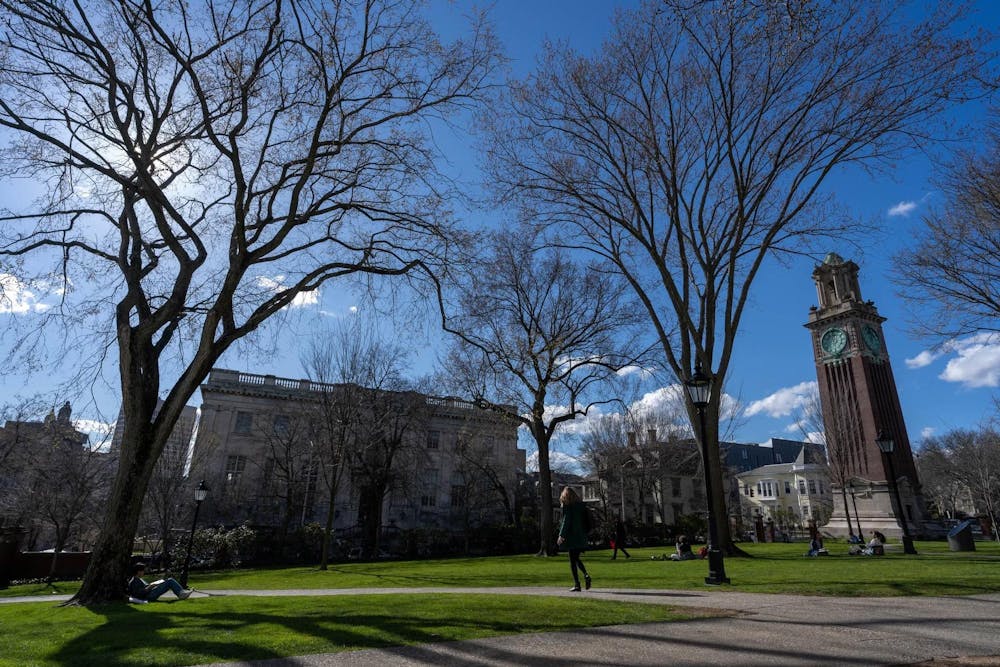When the Supreme Court ruled in June 2023 that colleges and universities could no longer employ race-based affirmative action, administrations nationwide scrambled to interpret a dense, 237-page ruling that would dictate the future of the admission process at their respective institutions.
A little over a year since the decision, the consequences are beginning to materialize, but in dramatically different ways. Brown has seen a substantial decrease in the share of Black and Hispanic students. The composition of first-year classes at other peer institutions, such as those at Yale and Princeton, remain largely untouched.
This discrepancy has sparked a firestorm in the world of college admissions, reigniting a familiar question from anti-affirmative action advocates that may have legal consequences: how did some colleges maintain racial diversity without race-based affirmative action?
According to a Herald analysis of publicly disclosed admission policies, there are few differences between the policies Brown implemented in the wake of the Supreme Court’s decision compared to its peer institutions. But the outcomes are vastly different.
At Brown, President Christina Paxson P’19 P’MD’20 and Associate Provost for Enrollment and Dean of Admission Logan Powell assured the campus community that they would explore every possible avenue to maintain racial diversity while complying with the justices’ ruling. In the past year, they have focused on recruiting a diverse applicant pool in part by expanding partnerships with community-based organizations serving underrepresented students, hiring additional staff focused on community outreach, traveling with historically Black colleges and universities on recruitment trips and more.
Despite this, Brown is on a path to become less racially diverse. Other schools have implemented similar measures and maintained their racial diversity.
While Princeton has not disclosed nearly as many initiatives following the Supreme Court’s ruling, Yale has published an extensive list of measures they took for the class of 2028’s application cycle.
This list mirrors the policies that Brown has implemented — from targeted recruitment to expanding partnerships with community-based organizations. One of the major discrepancies is Yale’s use of “place-based data.”
A tool dubbed “Opportunity Atlas” has allowed Yale to understand the economic mobility of an applicant’s neighborhood.
John Friedman, the co-director of Opportunity Insights, the organization which created the atlas, told The Herald that the platform “provides a new and more direct way for admissions officers to understand the advantages or barriers that students faced because of the neighborhoods in which they grew up.” Friedman, who is also the chair of Brown’s economics department, has conducted extensive research on college admissions.
“If colleges could increase applications for students coming from low-opportunity areas, evaluate those applications in the context of opportunities available to those students and support those students accepted to attend,” Friedman said, “colleges would expand not only the diversity of their students’ backgrounds but also the equality of opportunity for children broadly.”
Beyond economic mobility indicators, the Opportunity Atlas also provides racial data of children in specific neighborhoods using data from the U.S. Census. It is unclear whether Yale employs this feature, and Yale did not respond to The Herald’s multiple requests for comment.
When asked, Brown University Spokesperson Brian Clark did not disclose whether the University uses this tool.
What are the experts saying?
Beyond these measures, experts in college admission have struggled to suggest alternative strategies that could protect the diversity these institutions seek.
Catharine Bond Hill, the managing director of college consulting company Ithaka S+R, is encouraging institutions to recruit more lower income students. “When looking at the outcomes for schools that have reported their data, there is some suggestion that schools that have done better on low-income students … have also done better on racial diversity,” Hill said. Brown has repeatedly said that they are working to increase recruitment of applicants and enrolled students from low-income backgrounds.
Hill’s firm is also advising schools to eliminate legacy preferences and standardized test scores in admissions. Brown decided in March to require test scores for the foreseeable future, claiming that their data suggests “unintended adverse outcomes of test-optional policies in the admissions process itself, potentially undermining the goal of increasing access.”
“Students from less-advantaged backgrounds are choosing not to submit scores under the test-optional policy, when doing so would actually increase their chances of being admitted,” the committee said.
Administrators have also said they will seek public input on legacy preferences in admissions following the committee’s report, but have not provided a public update since making that commitment in March. Students for Educational Equity, a Brown-based activist organization, has called for the end of legacy preferences.
Richard Kahlenberg, an expert in college admissions and director of the American Identity Project at the Progressive Policy Institute, said that colleges should be “giving a leg up in admissions to socioeconomically disadvantaged students and increasing financial aid.”
Brown practices need-blind admissions, a policy that states “applicants’ ability to pay for their education will not be a determining factor in the admission decision.” But experts have suggested that this opens the door to using class conscious-admission policies that do not disadvantage lower-income applicants, The Herald previously reported.
Legal threats
Despite the implementation of these policies, Brown has been met with a less diverse first-year class than other institutions who have relied on similar policies.
To some, this is an indication that colleges who have maintained racial diversity — such as Yale, Princeton and Duke — are in violation of the Supreme Court’s ruling.
In letters obtained by The Herald, President of Students for Fair Admission Edward Blum alleged that these three institutions’ “racial numbers are not possible under true race neutrality.” SFFA’s lawsuit against Harvard and the University of North Carolina resulted in the Supreme Court’s June 2023 ruling outlawing race-based affirmative action.
In his letters, Blum requested that these colleges “identify the new, substantial race-neutral alternatives” that they implemented, threatening litigation if they refused to do so. “Without that information, SFFA will conclude that (they) are circumventing the Supreme Court’s decision,” Blum wrote. They “are now on notice.”
In response to this letter, Frank Tramble, Duke’s vice president for communications, marketing and public affairs, said that “Duke University is committed to compliance with the law. We value every student and are excited to welcome another outstanding class.”
Neither Yale nor Princeton responded to a request for comment.
When the case was being considered by the Supreme Court, these three schools filed an amicus brief in support of Harvard and UNC. They claimed that maintaining racial diversity without affirmative action would not be possible, a fact Blum highlighted in his letters.
During the litigation, Harvard presented several simulations showing that without affirmative action, no alternative measures would supplement the loss of racial diversity.
Despite this, Yale and Princeton seem to have maintained racial diversity while still claiming that they adhered to the Court’s decision. Blum is skeptical.
In his opinion, Supreme Court Chief Justice John Roberts explicitly outlawed the use of “race for race’s sake” in college admissions, but Roberts created an exception: “nothing in this opinion should be construed as prohibiting universities from considering an applicant’s discussion of how race affected his or her life, be it through discrimination, inspiration or otherwise.”
This allowed colleges to consider an applicant’s racial background if they chose to discuss it in their application essays. Roberts made clear that universities could not simply use this information to establish a new form of race-based affirmative action.
Brown — along with Yale, Princeton and dozens of other highly-selective colleges — added new essays to their applications that asked students to talk about their background without directly implicating their race. A new essay required for admission at Brown asks students to “share how an aspect of your growing up has inspired or challenged you, and what unique contributions this might allow you to make to the Brown community.”
“Our goal was to provide applicants ample opportunity to detail their talents, skills, experiences and ideas as they sought a college education that best fits them,” Clark, the Brown spokesperson, said in a statement to The Herald. He added that some applicants to the class of 2028 used this essay to focus on their identity while others focused on other experiences, ranging from “the impacts of climate change and global conflict on their lives, to personal experiences and work in their own communities.”
Yale and Princeton did not respond to multiple requests for comment about how similar essays are considered in their application review process.
In the coming years, “Brown’s admissions team will expand on previous measures and implement additional race-neutral strategies to encourage outstanding, diverse classes of first-year undergraduates,” Clark said. “The Office of College Admission continually evaluates the success of its outreach efforts to learn which are the most effective, and it will explore ways to build on initiatives that helped promote diversity among applicants and incoming students.”

Owen Dahlkamp is the managing editor of newsroom on The Herald's 135th Editorial Board, overseeing the paper's news operations. Hailing from San Diego, CA, he is concentrating in Political Science and Cognitive Neuroscience with an interest in data analytics. In his free time, you can find him making spreadsheets at Coffee Exchange.





